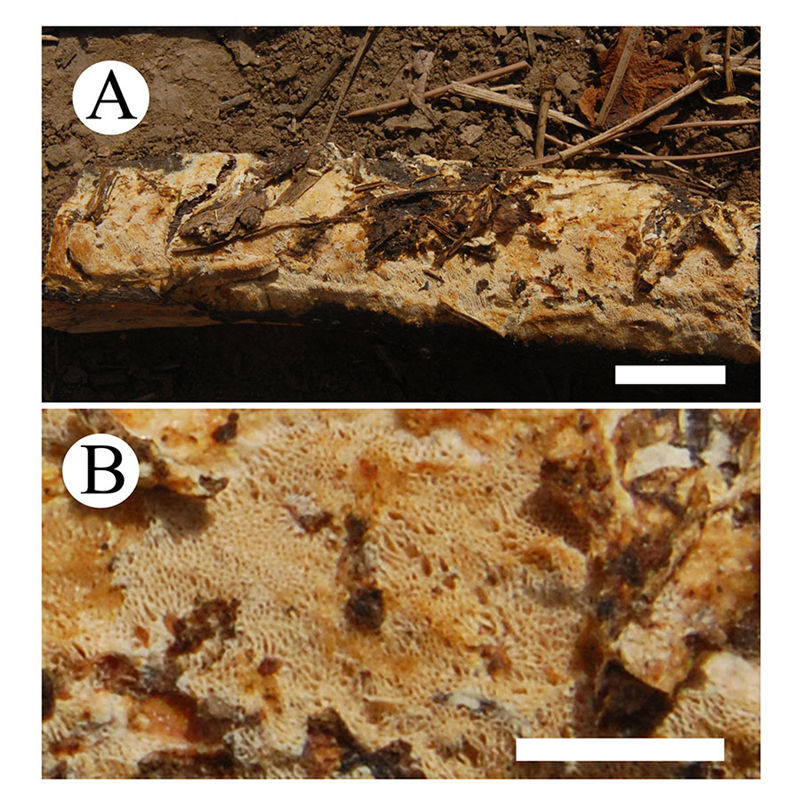Tyromyces P.Karst.is a cosmopolitan polypore genus,and many species were transferred to the genus during the last 50 years,resulting in the concept of this genus gradually expanded.Ceriporiopsis Domański is similar to Tyromyces in morphology,but both genera are not closely related in phylogenetic analyses.With the comprehensive research of taxonomy and phylogeny of Tyromyces and Ceriporiopsis,many problems were arised.Therefore,it is important to know the species diversity and relationships among these taxa.


The illustrated descriptions of 57 species were given,and studied specimens,host,distribution and remark of each species were provided.A new family,Fragiliporiaceae,was set up and described,and it was typied by a new genus,Fragiliporia.Five species,Ceriporiopsis alboaurantia,C.fimbriata,C.rosea,C.semisupina and Fragiliporia fragilis,were described as new;five new combinations,Antrodiella descendena,Bjerkandera vivii,Cinereomyces nodulosus,Postia cinereobrunnea,P.pendena and Trametes neostrigosus,were proposed.These results were the significant contribution for the taxonomy of Ceriporiopsis and Tyromyces.The molecular results showed the following conclusions:(1)Tyromyces is similar to Ceriporiopsis in morphology,but closer to Skeletocutis and Piloporia rather than Ceriporiopsis in phylogeny.(2)Tyromyces s.s.nested into the tyromyces clade,which mainly included T.chioneus,Piloporia sajanensis and Skeletocutis amorpha.(3)Ceriporiopsis was polyphyletic.(4)Ceriporiopsis s.s.nested into phlebia clade,which included C.gilvescens,Mycoacia fuscoatra,M.nothofagi,Phlebia livida,P.subserialis,P.radiata;these species have poroid,smooth,hydnoid,odontioid,merulioid hymenophore,but grouped together in phylogenetic trees.(5)Phlebia(established in 1821)was an earlier name than Ceriporiopsis(set up in 1963),some combinations should be proposed if the two genera were merged,and Phlebia has the priority.(6)a new clade,the fragiliporia clade was proposed in Polyporales.For the time being some species are still addressed Ceriporiopsis due to lacking of the DNA datasets on these species.The phylogenetic trees based on the single gene(ITS,nLSU)and muti-genes(ITS+nLSU,ITS+nLSU+mtSSU+TEF1+RPB2)showed that the ITS+nLSU were suitable for phylogenetic study at generic level on Tyromyces and Ceriporiopsis.



